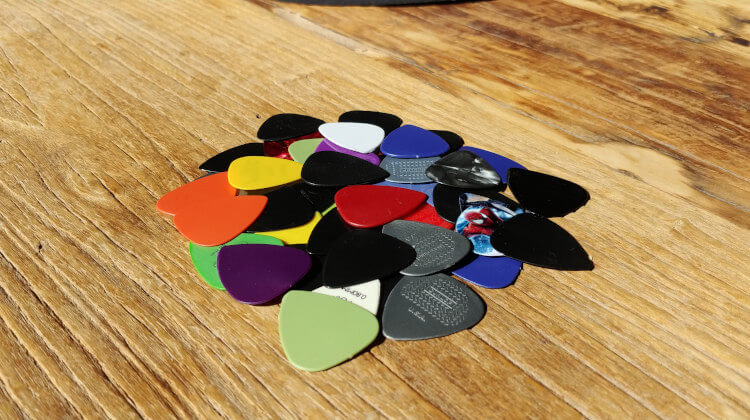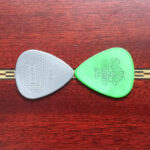The sound of the guitar was revolutionised when Leo Fender launched his ‘synchronized tremolo’ bar in 1954, allowing guitarists to create subtle or extreme vibrato-based effects. An experimental study has now revealed the huge impact that different types of wound bass strings have on the whammy bar’s sensitivity.
The most popular way to set the Stratocaster-style tremolo system (tremolo is technically the modulation of volume rather than pitch but tremolo bar is used as commonly as whammy bar) is to float it. This allows a guitarist to pull the arm up (raising the strings’ pitch) as well as push it down (lowering the strings’ pitch). The video below shows how guitarist Jeff Beck uses the floating tremolo arm on a similar Stratocaster.
But controlling the vibrato effect of the tremolo (or whammy) bar can be challenging as each individual string’s pitch deviates by different relative intervals when the floating arm is used.
When the arm is lifted to its maximum, the G string is commonly set to hit a minor third sharp, which results in the B string hitting a whole tone sharp; and the high E string a semitone sharp. This is a musical combination but the wound low E and A bass strings tend to be more sensitive to the tremolo arm’s movement (although not always), and how those wound strings are made strongly affects this sensitivity.
It all comes down to the ratio of core to winding mass rather than the overall gauge of the string, according to a 2017 study by the University of St Andrews Head of Music Technology, Jonathan A. Kemp.
In fact, increasing the mass of the winding resulted in an almost one-third (28%) reduction in the tremolo arm interval on the low E string.
The reason is not immediately intuitive to guitarists, but the science shows that engineering strain rather than string tension, is the key factor. Engineering strain is a measure of the string deformation when force is applied, while string tension measures the force required to bring the strings up to pitch.
Nickel-plated steel wound bass strings may well be the most popular choice of string for most guitarists. However, the simplest way to increase the mass of the winding is to use pure nickel windings (which are more dense) rather than nickel-plated steel windings around the bass strings’ steel core.
The experiment confirmed the theory, by testing D’Addario EPN120 Pure Nickel Super Light 9-41 strings against D’Addario EXL120 Super Light 9-42 strings. Both sets were strung on a Fender Stratocaster Oiled Ash 10 for 15 limited edition.
However, the D string from the D’Addario EPN120 Pure Nickel set was an outlier. It had a significantly wider core with a significantly narrower winding, which led to a larger pitch deviation for tremolo arm use in comparison to the standard EXL120 set.
The study also found that the sensitivity of the tremolo arm is affected by changes in saddle height and the distance of string free to move behind the nut.




Kemp has used this insight to produce his own sets, Kemp Strings, which have balanced engineering strains across the third, fourth, fifth and sixth strings (the winding to core ratios of the wound strings are adjusted to match the third string). A guitarist using these sets who bends strings while playing will also find they now only need to apply the same amount of force to do so, whether bending on the low E, A, D or G strings. This is different than balanced tension string sets on the market, where the strings will still detune unevenly when using a tremolo bar and different amounts of force will be required to bend a string to the required pitch.
An example of Kemp Strings in action is below (and the tremolo arm effect can be seen here). Kemp Strings can be purchased at: https://kempstrings.com.





